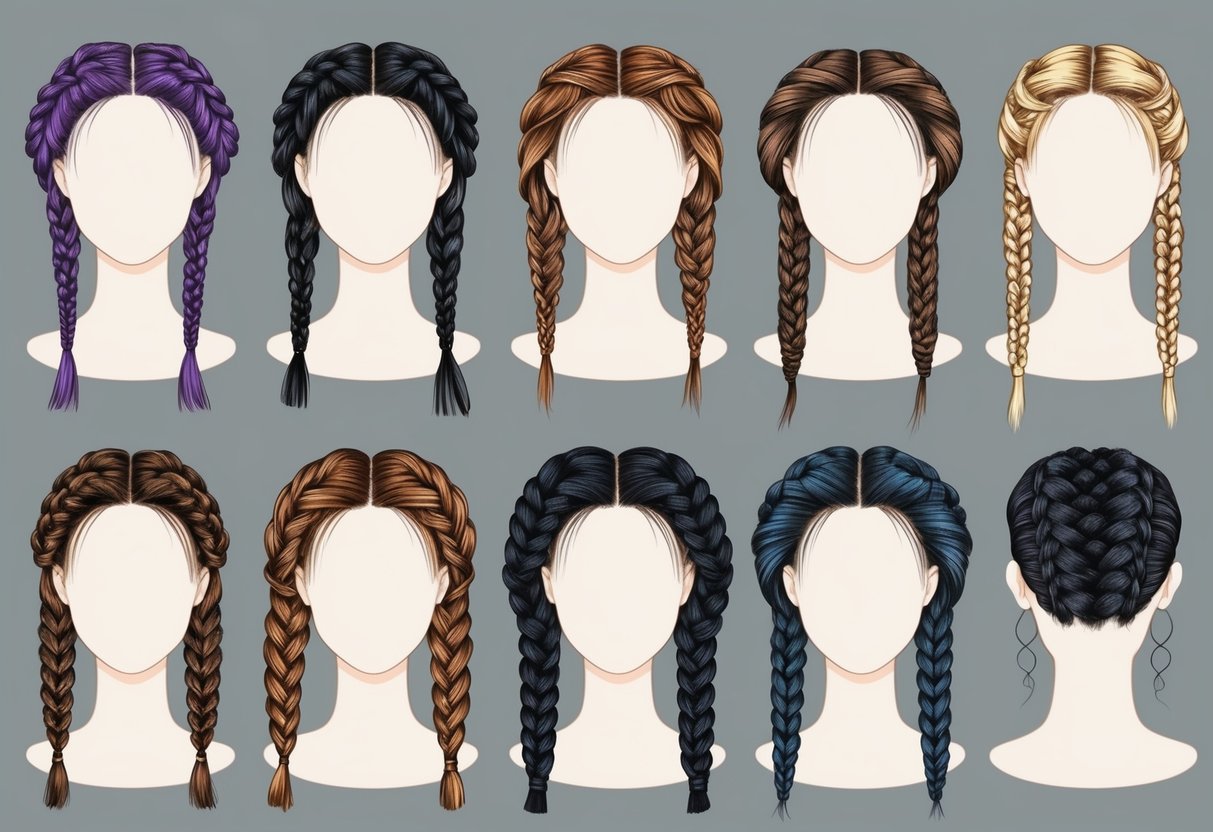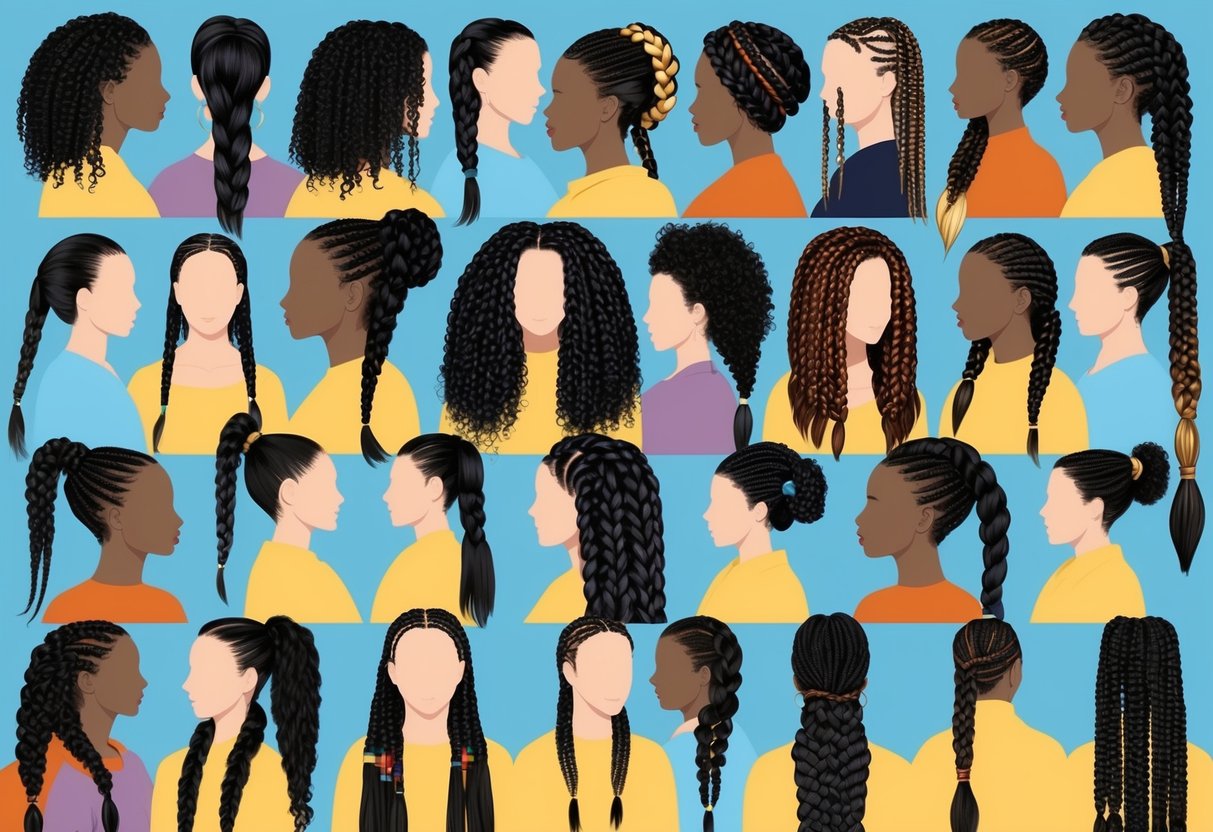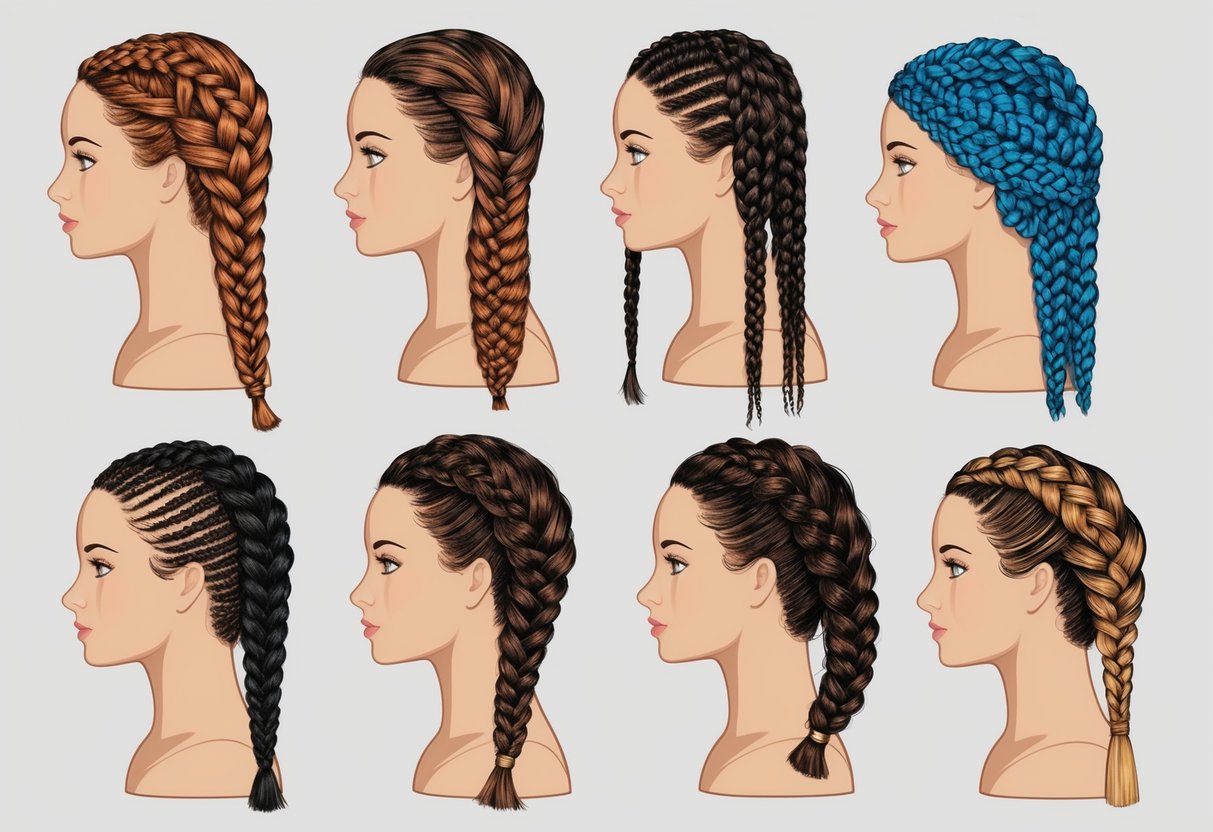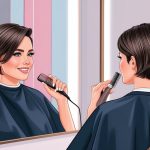
Emerging Trends in Feed-In Braids

Feed-in braids are evolving with new techniques and styling details that allow for high levels of customization. The latest trends incorporate intricate patterns, playful textures, and variations in braid size, giving wearers more ways to express personal style.
Creative Patterns and Partings
Creative partings are now a defining feature of modern feed-in braids. Stylists are designing geometric, zigzag, and curved parts that turn each hairstyle into a unique visual statement.
Patterns like hearts, swirls, and side designs are especially popular on platforms like Instagram and Pinterest, making the braid base as eye-catching as the braids themselves. Going beyond straight-back cornrows, these patterns enhance even classic styles, adding dimension under updos and ponytails.
Some braiders use contrasting braid thickness to accentuate these custom parts, further emphasizing their design. These innovative partings support all hair lengths and textures, giving versatility no matter the hair’s density or health.
A creative pattern makes the style stand out at events, work, or daily wear. It provides a subtle but impactful upgrade that can be refreshed as trends change, allowing for continual reinvention.
Adding Bouncy Curls
One of the biggest hair trends in feed-in braids is the integration of bouncy curls. Stylists are weaving in curly synthetic strands or blending natural curls into the braids’ ends.
This technique brings movement and volume, resulting in a softer, more textured finish compared to traditional straight braids. Bouncy curls add a playful touch and work well with layered or shoulder-length cuts, as well as longer lengths.
Those seeking a boho-inspired look often ask for curls mixed with feed-in braids, combining structured styling with effortless waves. Care tips for bouncy curls involve light moisturizing and avoiding heavy product build-up.
The curls also allow for more styling options—hair can be worn loose, half-up, or tied back, making it easy to switch up looks without complete restyling.
Small Braids Craze
Thin, small feed-in braids are at the forefront of protective styling trends. These micro-sized braids offer a sleek, high-density finish that can be styled into buns, ponytails, or even intricate updos.
Small braids are especially favored for their longevity and versatility—they last longer, resist frizz, and can mimic the look of natural hair when installed well. This style requires patience and a skilled hand, as installing dozens of small braids can take several hours.
However, the result is lightweight and easy to maintain. They remain popular among those seeking an understated yet detailed finish and are frequently featured in trend roundups for their practicality.
Small feed-in braids can be accessorized with beads, cuffs, and threads to match different occasions. Their refined finish suits everything from professional settings to casual outings.
As hair trends move toward low-maintenance yet polished looks, small braids continue to gain popularity across textures and lengths.
Frequently Asked Questions

Feed-in braids offer flexible styling choices for various hair textures and lengths, including updos, protective styles, and modern looks. Understanding the techniques, hair types, and style variations can help achieve the desired result while maintaining healthy hair.
How can I incorporate feed-in braids into a bun hairstyle?
Feed-in braids can be gathered into a high or low bun once installed. They are often styled into elegant updos by securing the braids with hair ties, pins, or wrapping them around themselves for a sleek finish.
This style is popular for its neat appearance and is gentle on the hair compared to tight, tension-heavy styles.
What are some trending feed-in braid styles for different hair lengths?
For short hair, cornrow feed-in braids and half-up, half-down styles are common. Medium lengths often allow for straight-back feed-in braids or pigtails.
Longer hair makes it possible to do layered braids, goddess braids, or jumbo feed-in styles, offering both volume and creativity for a standout look.
Which type of hair extensions are best suited for creating feed-in braids?
Kanekalon synthetic hair is the most popular choice for feed-in braids due to its durability, natural texture, and manageable cost. This type of extension blends seamlessly with most natural hair types and comes in a wide variety of colors and thicknesses.
Other synthetic hair options are also used but may not mimic natural hair as closely as kanekalon.
Can feed-in braids be a suitable style for fine or thin hair?
Feed-in braids can work well for fine or thin hair because small, gradual sections of extension hair are added, reducing scalp tension. This method helps distribute weight and prevents potential breakage, making it a safer option than some bulkier braid styles.
Proper installation and gentle maintenance are key to keeping fine hair healthy.
What is the difference between feed-in braids and box braids?
Feed-in braids use progressively added hair along the braid, which creates a natural-looking, seamless transition in thickness and length. Box braids, in contrast, involve sectioning the hair into small square parts and braiding extensions in from the root.
The feed-in approach results in braids that appear to grow organically and are often lighter on the scalp.
Are feed-in braids a protective style for natural hair?
Feed-in braids are considered a protective style because they shield natural hair from daily manipulation and environmental stress.
By encasing the hair within braids, the style helps reduce breakage and split ends.



